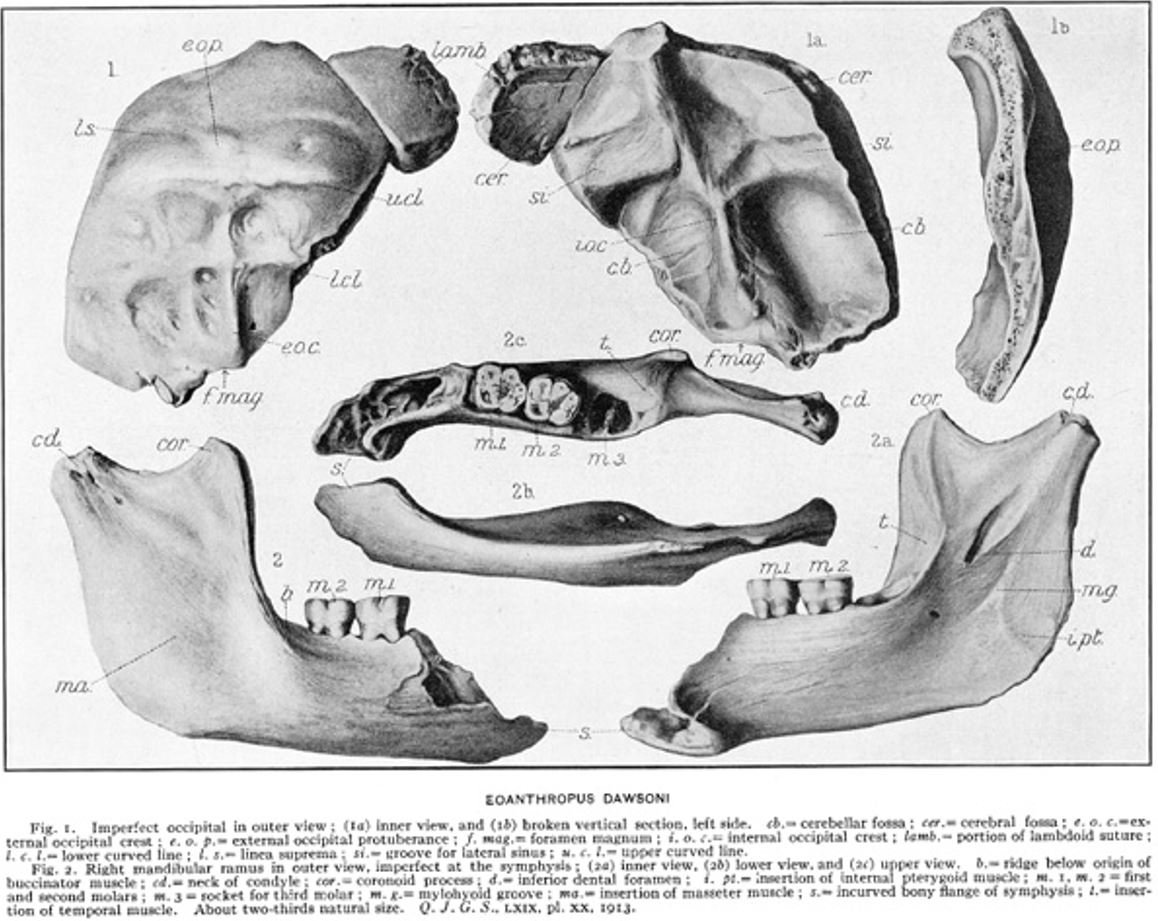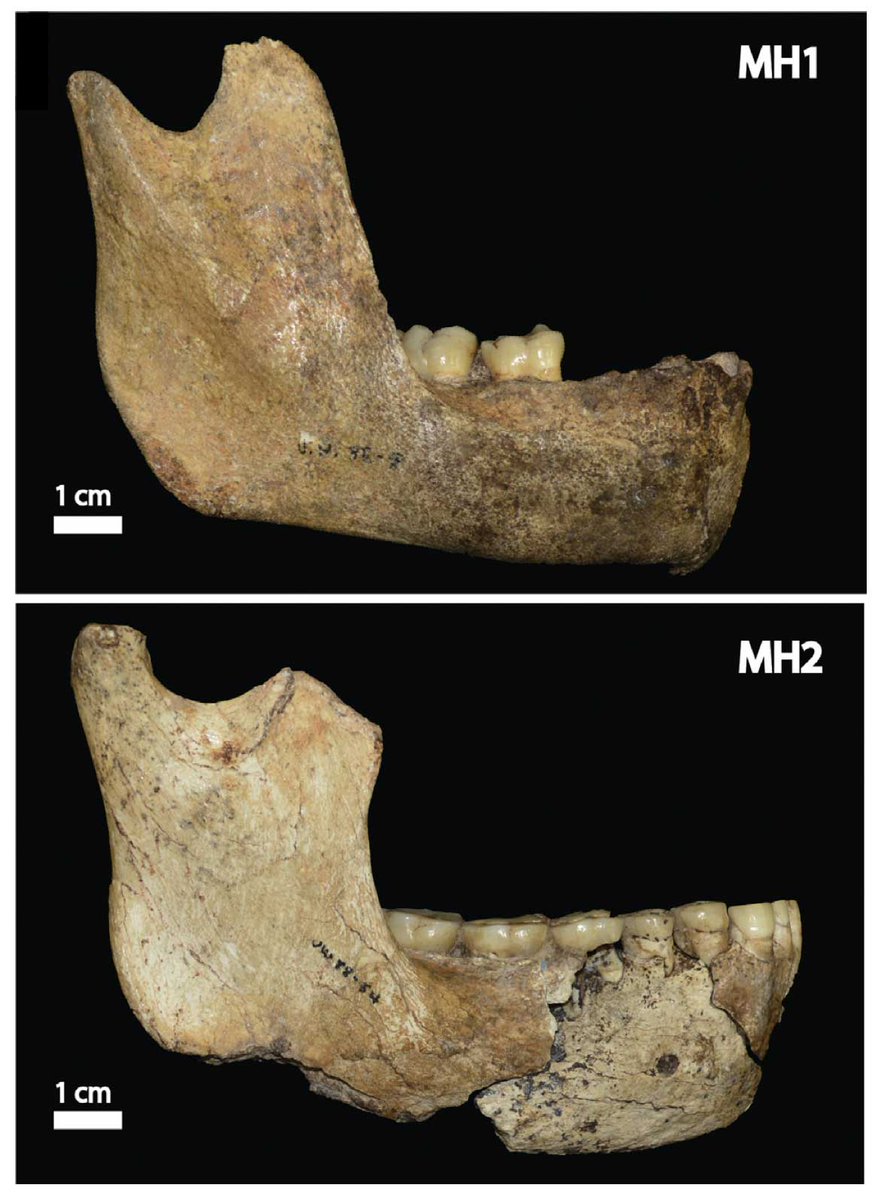Discover and read the best of Twitter Threads about #paleoanthropology
Most recents (5)
If you're interested in science you're familiar with Piltdown man, formally named Eoanthropus dawsoni in 1912 but shown to be hoaxed in 1953. What you may not be familiar with is the DUALIST CONTENTION, and here's a thread on it... 



Yes, the one thing that every single person who’s heard of Piltdown man knows is that it was eventually determined to be a hoax. What’s discussed less frequently is that early 20th century views on Piltdown man were -far more complex- than popularly portrayed...
Congratulations to Sally Reynolds and René Bobe, for this amazing new book! I’ll take this opportunity to talk a bit about the chapter I contributed to, led by @bobe_rene and co-authored by me, @carvalhoprimate and Meave Leakey.
The Koobi Fora Formation in the Lake Turkana Basin is one of the most important rock units in the world, and continues to provide one of the richest records of our evolution in Africa. #paleoanthropology
There are nearly 250 hominins documented from East Turkana. It includes periods of astonishing hominin diversity with Homo habilis, H. rudolfensis, H. erectus, and Paranthropus boisei occupying the region between 2—1.4 million years ago.
#fossilfriday
#fossilfriday

Just published the first chapter of my PhD on remote fossil site detection using satellite images & #unsupervisedlearning in @GorongosaPark with my supervisors @paleobob @carvalhoprimate
It is #openaccess at peerj.com/articles/11573/
@primobevolab @oxford_anthro @PeerJLife 1/n
It is #openaccess at peerj.com/articles/11573/
@primobevolab @oxford_anthro @PeerJLife 1/n
The paper starts by exploring the spatial and temporal gaps of the #primate & #hominid fossil record of Africa in the late #Miocene. @GorongosaPark in #Mozambique is shown to be a strategic location, with great potential to fill some major gaps in #paleoanthropology 2/n 

We also discuss the difficulties of surveying for new paleontological localities, specially within modern forests/woodlands as in #Gorongosa, since dense vegetation cover reduces visibility (i.e. finding clues in topography and landscape). 3/n 

A hint of the social behavior of early Homo erectus comes from the earliest known #hominin to survive with near total loss of teeth, 1.8 million years ago. Some wild primates also survive years with little functional dentition. #paleoanthropology #FossilFriday 

For years, anthropologists have looked at the survival of older people with tooth loss as a possible indication of social caring, empathy, and value of tradition and knowledge to social groups—once with Neandertals, more recently with H. erectus. #paleoanthropology 

Some have criticized inferences about social care in these human relatives, by pointing out other primates that sometimes survive. This wild chimpanzee skull in the collection of the @goCMNH is a great example, with loss of all but one molar and premolars. 

The MH2 #hominin mandible is still being built, fragment by fragment, as pieces are recovered from Malapa and prepared in the lab. The skull of this adult Australopithecus sediba individual may be found within the breccia as well. #paleoanthropology 

If you're following this series of illustrations, you may recognize that MH2 is my first repeat, as I earlier featured the MH2 pelvis. The Malapa skeletons are amazing examples of discovery, as each piece emerges from the site, it allows us to test new hypotheses.
Some scientists claimed that the difference between MH1 and MH2 mandibular ramus shape must mean that one is Australopithecus and one Homo. Ritzman and coworkers (2016) examined this, finding them compatible with normal within-species variation. dx.doi.org/10.1016/j.jhev… 


